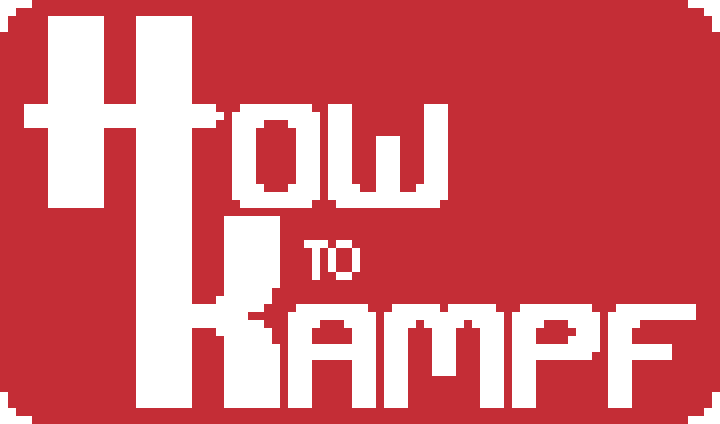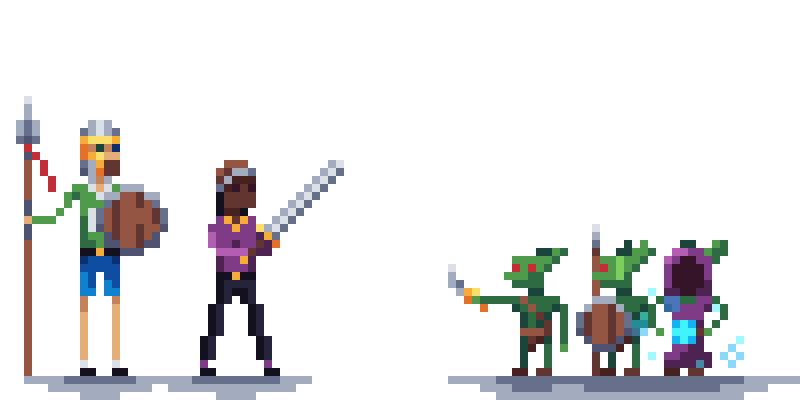Kampf/en: Unterschied zwischen den Versionen
Mewo (Diskussion | Beiträge) (Die Seite wurde neu angelegt: „==3. Combat (turn based)== In combat, all characters perform their actions in order, starting with the character with the highest initiative value. This value…“) |
Mewo (Diskussion | Beiträge) (Die Seite wurde neu angelegt: „''Firearms cannot be parried.''“) |
||
| Zeile 75: | Zeile 75: | ||
A parry roll is a roll for action. If the character has a shield or weapon that can be used to parry particularly well or poorly, the gamemaster can add an appropriate (dis-)advantage to the roll. If the roll succeeds, the attack is fended off and the character does not suffer any damage. Critical attacks cannot be parried. If the character parries an armed attack with his bare fists, the character takes half the damage (rounded). | A parry roll is a roll for action. If the character has a shield or weapon that can be used to parry particularly well or poorly, the gamemaster can add an appropriate (dis-)advantage to the roll. If the roll succeeds, the attack is fended off and the character does not suffer any damage. Critical attacks cannot be parried. If the character parries an armed attack with his bare fists, the character takes half the damage (rounded). | ||
'' | ''Firearms cannot be parried.'' | ||
===Schaden=== | ===Schaden=== | ||
Version vom 18. August 2020, 00:20 Uhr
General
In general, a fight represents a special situation. In "free play" multiple actions can take place sequentially or simultaneously. In combat, though the actions are performed one after another, but in game these actions happen almost simultaneously. A round of combat takes 3 to 8 seconds in the game (depending on the number of combatants and the situation).
A combat situation is divided into the following areas:
- Initiative
- Ambush
- Combat (turn based)
- End
1. Initiative
The initiative represents how quickly a character reacts within the combat situation. The higher the roll, the sooner the character's turn.
Each player rolls 1d10 and adds their physical points to the results. The gamemaster can either roll a separate initiative roll for each NPC or, if all NPCs have the same physical points, a collective initiative roll.
| Howky and Bernd face a group of three snarling goblins with razor-sharp teeth.
Diplomacy has failed. Now your weapons have to do the talking |
The gamemaster lets Howky and Bernd roll for initiative.
15.
19. |
| The gamemaster determines that Bernd goes first. Then it is the goblins turn, and finally Howky may perform his action. |
2. Ambush
If a fighter has not noticed his opponents initially, yet they are aware of him, he is caught in surprise. If a combatant is surprised, he cannot participate in the first round of the fight / combat. (The gamemaster can make the players roll for perception or a similar skill beforehand, in order to detect an ambush for example. If this succeeds, the characters are not surprised).
| Howky and Bernd venture deep into a cave and run directly into the trap of a well-positioned Orc Archer.
The gamemaster decides that this is a combat situation and lets all participants roll for initiative. The gamemaster decides that Howky, due to his skill "perception", has a chance to escape the surprise. SUCCESS! As Howky and Bernd advance further into the cave, Howky hears the drawing of a bowstring and gets ready to fight, while an orcish arrow lands right next to the stunned Bernd. |
3. Combat (turn based)
In combat, all characters perform their actions in order, starting with the character with the highest initiative value. This value must be re-rolled for each battle.
Attack
The player rolls for attack according to his character's corresponding ability. If it succeeds, the character strikes his opponent and can inflict damage.
Defense/ Parry
Once per turn, a character can attempt to parry an attack. A parry roll is a roll for action. If the character has a shield or weapon that can be used to parry particularly well or poorly, the gamemaster can add an appropriate (dis-)advantage to the roll. If the roll succeeds, the attack is fended off and the character does not suffer any damage. Critical attacks cannot be parried. If the character parries an armed attack with his bare fists, the character takes half the damage (rounded).
Firearms cannot be parried.
Schaden
Der verursachte Schaden hängt von der Waffe ab, mit welcher der Charakter seinen Gegner angreift. Der Schaden wird mit xW10 ausgewürfelt, wobei x sich von Waffe zu Waffe unterscheidet (Siehe weiter unten ). Sinken die Lebenspunkte des Charakters auf 0, stirbt dieser augenblicklich. Trifft ein Spieler mit seiner Waffe kritisch (siehe Würfe & Proben), wird der ausgewürfelte Schaden verdoppelt.
Beispiel:
Normaler Schaden: 3W10 Schaden. Ergebnis = 19 Kritischer Schaden: 3W10 x2 Schaden. Ergebnis = 19 x 2 = 38 Schaden
4. Ende
Eine Kampfsituation gilt als beendet, wenn alle Charaktere oder Gegner keine Lebenspunkte mehr besitzen oder Gegner/Charaktere geflohen sind und sich außer Angriffsreichweite befinden. Natürlich ist es auch möglich, dass sich eine Partei ergibt. Dann ist sie auf die Gnade der anderen angewiesen. In diesem Fall entscheidet der Spielleiter oder die Gnade der Spieler, ob der Kampf beendet ist.
Waffenarten/Schaden
Waffen können von Szenario zu Szenario unterschiedlich sein. In einer mittelalterlichen Welt wird hauptsächlich mit Schwertern, Äxten und Bögen gekämpft, während in einer futuristischen Welt Laserpistolen oder ähnliches zum Einsatz kommen. Der Schaden der Waffen kann sich also sehr stark unterscheiden. Grundsätzlich gilt: Jede Waffe verursacht Schaden in Höhe einer bestimmten Anzahl an 10-seitigen Würfeln. Die folgende Tabelle gilt als Richtwert und soll dem Spielleiter ein Werkzeug sein, eigene Waffen zu gestalten. Natürlich kann z.B eine Axt auch mehr Schaden verursachen als ein Schwert.
| Improvisierte Waffen (Werkzeuge/Bretter)/waffenloser Kampf | 1W10 Schaden |
| Stock | 1W10 + 5 Schaden |
| Messer/Dolch | 2W10 Schaden |
| Steinschleuder/Wurfwaffen | 3W10 Schaden |
| Axt/Streitkolben/Kriegshammer/Baseballschläger | 4W10 Schaden |
| Schwert/Machete | 5W10 Schaden |
| Bogen/Armbrust | 6W10 Schaden |
| Pistolen | 7W10 Schaden |
| Gewehre | 8W10 Schaden |
| Schrotflinte | 9W10 Schaden (Schaden nimmt mit zunehmender Entfernung ab) |
| Bombe/Granate/Mine/Raketenwerfer | 10W10 Schaden |
Der Schaden der Waffen kann vom Spielleiter mit Boni angepasst werden. Sollte es sich bei einem Schwert beispielsweise um ein besonderes Schwert handeln, zum Beispiel eine Meisterarbeit oder ein legendäres Schwert, kann der Spielleiter einen absoluten Bonus auf den Schaden gewähren. Das Schwert Excalibur z.B. könnte einen Schadenswert von 5W10 + 10 haben.
In gleicher Weise kann der Schaden für "waffenloser Kampf" bei besonders starken Charakteren vom Spielleiter angepasst werden. Ein Boxer oder Martial-Arts-Kämpfer kann deutlich mehr W10 + x Schaden verursachen als andere Charaktere.


